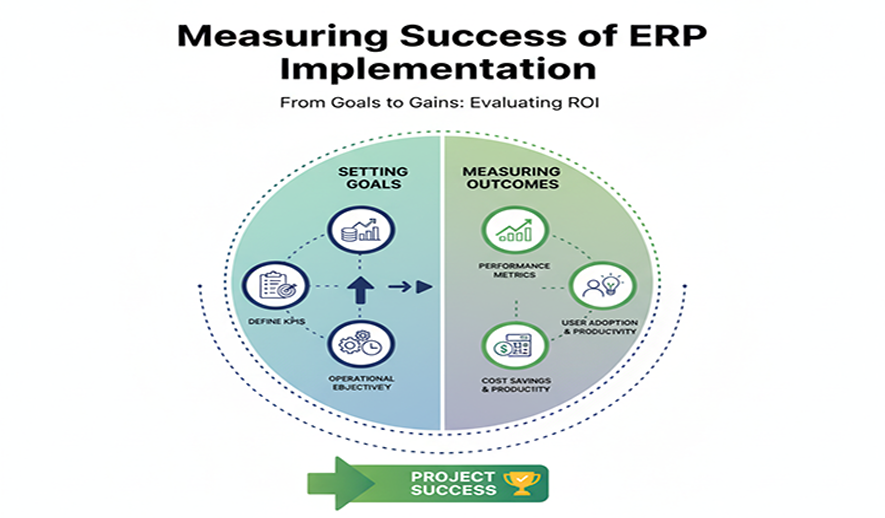
Measuring Success of ERP Implementation
Measuring the success of an ERP implementation requires evaluating tangible metrics and intangible benefits against the goals set during the planning phase. Success goes beyond a smooth launch to encompass long-term value realization, operational improvements, and user adoption.
Project management metrics
These metrics help track the implementation process itself to ensure it stays on track and within budget.
- Budget vs. actual spending: Compare the project's actual expenses against the initial budget to track for cost overruns. A Cost Performance Index (CPI) greater than 1 indicates efficient budget management.
- Timeline adherence: Track whether key project milestones are being met on schedule. A Schedule Performance Index (SPI) greater than 1 shows the project is ahead of schedule.
- Scope adherence: Monitor all change requests and the impact of scope changes to avoid project delays.
Operational efficiency metrics
ERP systems are implemented to streamline processes. Measuring improvements in efficiency is a core indicator of success.
Financial performance metrics
These metrics provide a concrete measure of the ERP's financial impact on the business.
User adoption and satisfaction metrics
An ERP system is only successful if employees actually use it correctly and find it helpful.
- Cycle time reduction: Measure the time required to complete critical business processes before and after implementation, such as the order-to-cash or quote-to-cash cycles.
- Productivity gains: Track output per employee or the time saved on manual, repetitive tasks.
- Reduced error rates: Evaluate the decrease in data entry errors, order-processing errors, and other inaccuracies.
- Optimized inventory: Track key inventory metrics like inventory turnover rates and carrying costs to see improvements in inventory management.
-
- Return on Investment (ROI): Calculate the financial returns by comparing the total cost of ownership (TCO) of the ERP system to the monetary value of efficiency gains and cost reductions.
- Financial closing time: Track the time it takes to complete month-end and year-end financial closing activities. A shorter closing period signifies greater efficiency.
- Reduced operational costs: Compare a variety of operational costs, such as IT maintenance, inventory holding costs, and administrative expenses, before and after the ERP implementation.
- Revenue growth: Attribute any increases in revenue to the improved business processes supported by the ERP system.
- User adoption rates: Track the percentage of intended users who are actively logging in and utilizing the system. Low adoption is a sign of a failed implementation.
- Training effectiveness: Measure how well employees comprehend and apply their training. Conduct pre- and post-training assessments to gauge knowledge retention.
- Employee satisfaction surveys: Use regular surveys to gather feedback on the system's usability, performance, and impact on employee morale.
- System utilization: Track how frequently employees use various features and modules to ensure they are leveraging the full functionality of the ERP.
